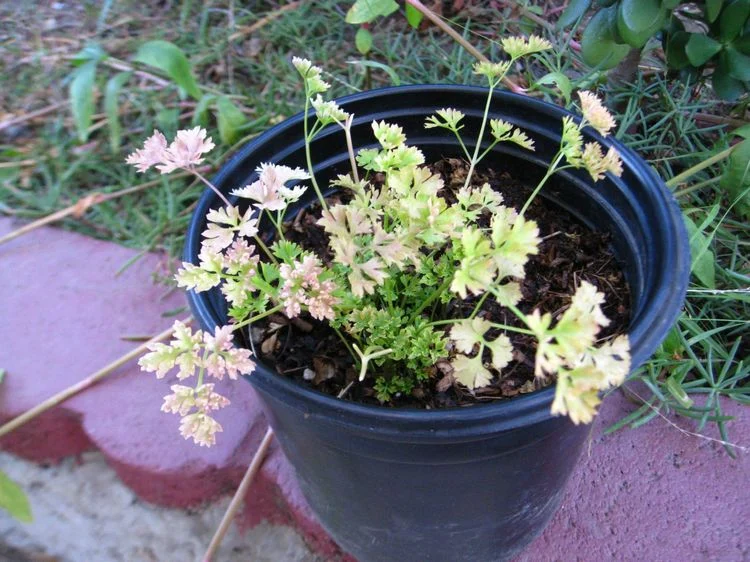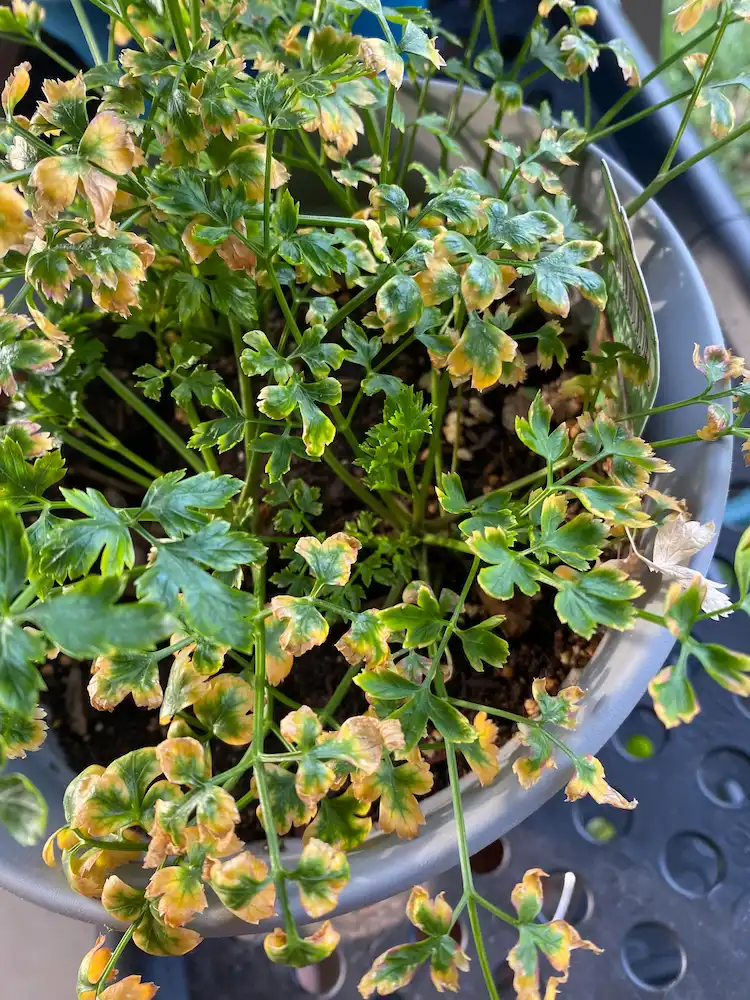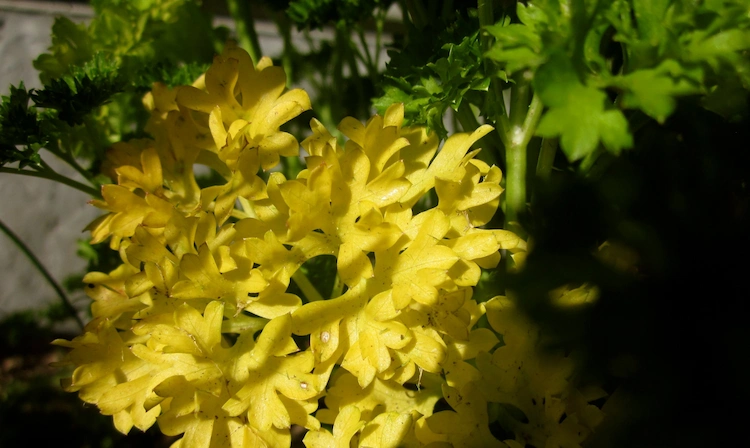Parsley is one of the most popular herbs that grows in almost every garden or in pots on the windowsill. As with all plants, it is important to take proper care of them to prevent them from wilting and yellowing over time. Parsley turns yellow for a number of reasons, but this is usually not a big deal as long as the problem is identified and addressed quickly.
Parsley is turning yellow: why is it and what can you do?
The healthy herb is often used to garnish various dishes with a few fresh leaves and give them a unique aroma. If you are growing parsley in your garden or on the balcony but suddenly find that its leaves are turning yellow, it usually means that the plant is under stress. Below you will find the most common reasons for this and what you can do about it.
Overhydration is the most common cause

If you notice that some of your parsley leaves are yellow, the first thing you should do is check the soil to make sure you don’t overwater it.
If you water the plant too much, the roots will drown and the excess water will cause fungal problems like root rot.
Check the soil to see if it feels too wet and if it does, stop watering immediately. Dig the plant out of the ground and examine the roots. Remove the affected areas and transplant the parsley in a pot with fresh soil and drainage. Reduce watering to once to three times a week.
drought and heat

If the leaves of parsley are turning yellow from below and the stems are drooping, then your plant is suffering from drought. On hot summer days, the plant loses water and moisture very quickly before the roots can absorb the water and this causes the leaves to dry up. Therefore, the potted plants are more prone to yellowing from the summer heat as they dry out faster.
If you spot underwatering early, put the parsley in a shady place and water it in good time. Check the plant after a few hours and water again as needed.
Parsley turns yellow: lack of light

Parsley thrives best in partial shade to full sun, requiring at least 6-8 hours of sunlight per day for photosynthesis. If it doesn’t get enough light and air circulation, the leaves will turn yellowish, the plant will grow slowly and the stems will droop due to lack of moisture and energy.
Be sure to place the potted plants in a sunny spot or, if you are growing them indoors, provide artificial lighting. Remove the severely yellowed leaves to allow the plant to recover faster.
stress after repotting

The parsley has a long root and should therefore be transplanted very carefully so that it is not damaged. Remove the plant from the old pot and move it to its new location as soon as possible. Make sure that the soil is not too wet and protect the parsley from direct sunlight for 2-3 days until it gets used to the new environment.
Some yellowing is normal after transplanting, but should go away on its own after a few weeks with proper care. If the yellowing persists or worsens, consider other possible causes as well.
pest infestations and diseases

Parsley leaves can turn yellow when the plant is infested with pests such as aphids and spider mites.
- The small green aphids are rarely a serious problem and can be effectively controlled with home remedies or removed by hand.
- If you notice small yellow spots on the leaves of your parsley, this is a sign that the plant is infested with spider mites. The tiny pests are barely visible but can cause wilting and stun growth. Cut off the affected leaves and immediately treat the plant with neem oil.
Another cause of yellow parsley can also be gray mold. This plant disease is caused by a troublesome species of fungus and results in wilting, yellow leaves that simply will not heal unless the problem is addressed early.
Yellow parsley due to lack of nutrients
Parsley prefers a nutrient-rich soil and if you use soil from your garden there is a risk that it will contain too much clay, which can be harmful to the plant.
If the plant is not doing well and some leaves are turning yellow, add plenty of compost to the soil to ensure nutrients and maintain a permeable structure. An additional fertilizer is not necessary if you use good compost.
